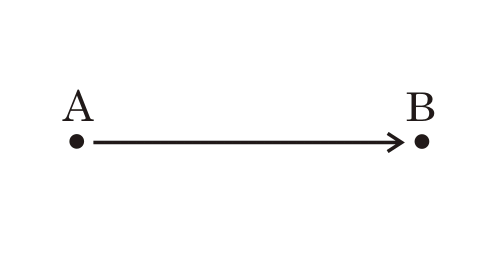|
LITR 4632: Literature of the Future  |
Student Midterms 2011: Sample Essay 1
|
 |
Katherine Fellows
24 June 2011
Narrative Forms for Visions of the Future
So far, in Literature of the Future, we have encountered three narrative
classifications under which all our assigned texts fall: creation/apocalypse,
evolutionary, and alternative. First, we discussed the creation/apocalypse
narrative. Generally, stories following this narrative are presumed to have been
divinely inspired or otherwise revealed to the author by supernatural means.
Because these stories are derived from dubious or unverifiable sources, any
apocalyptic assumptions or assertions made within them are difficult to
disprove; there is usually no empirical evidence offered in support—the
narratives’ claims are based on belief rather than objective observation—so
there is usually no method of scientifically or logically countering an
apocalyptic claim. Creation/apocalypse stories focus on short timescales
approximately six thousand to ten thousand years long, which are somewhat easy
for humans to comprehend, and they most often follow a linear timeline that
closely resembles a story. This often means that, when an apocalypse fails to
arrive, the creation/apocalypse narrative is passed to the next generation,
creating a general perception of moral decline towards an assured destruction.
This semester, the Bible’s
Genesis and
Revelation best exemplify the
creation/apocalypse narrative structure. Together, these texts provide a
relatable if not comforting story for believers. In
Genesis, the author supplies readers
with a self-centric creation story; God creates man and woman in His image, and
humankind rules over the other living things on Earth. Humanity lives peacefully
and without toil in a life made specifically for us, but Adam and Eve soon fall,
sparking a moral decline. Revelation
depicts the ultimate consequence of that decline—that those who follow God will
be saved and redeemed, while those who fail to do so will suffer. Combined,
Genesis and
Revelation portray a clear set of
consequences for readers: follow God, or face the repercussions. The texts
impose an understandable system where there once was none, but they provide no
observable evidentiary support; the Bible
relies on the faith and belief of its readers.
Octavia Butler’s Parable of the
Sower provides a more modern, relatable vision of apocalypse. Humanity’s
apathy with the earth’s well-being leads the population down a steep route of
moral decline. Ironically, water, the key to life, is scarcer than gasoline, a
commodity that quite literally results from the deaths of earlier organisms.
People are raped and beaten in the streets, the elderly are robbed of their
possessions, and communities must band together to prevent their neighborhoods
from being pillaged and burned to the ground. Lauren, the lead character, is
hypersensitive to the suffering of other people, which ultimately leads her to
escape the apocalypse and establish a new community free from the chaos of the
old.
Second, we discussed the evolutionary narrative. Unlike
creation/apocalypse narratives, evolutionary narratives originate from empirical
evidence, observation, and experimentation. Evolutionary narratives can be
disproven through science and logic, but they are more often clarified or
improved when new evidence is found. Rather than follow a familiar story-like
timeline, evolutionary narratives assume complex, cyclical timelines over
periods anywhere from ten thousand to twenty billion years long, which typically
makes them unapproachable and difficult for laymen to comprehend. Evolutionary
narratives are commonly deduced from a multitude of sources, as opposed to a
single text—or, perhaps, several texts—used to support creation/apocalypse
narratives. This means that evolutionary narratives are consistently accepted by
scientists familiar with the supporting evidence but unpopular amongst the
general public.
Perhaps the most obvious example of the evolutionary narrative in this
semester’s texts lies within H.G. Wells’s
The Time Machine. After regaining access to his time machine, the time
traveler journeys further into the future. Despite the apocalyptic struggle
between the Eloi and the Morlock, Earth continues to support life, albeit
nonhuman. Where a green valley previously laid, beaches appear, crawling with
crab-like creatures. Eventually, these too succumb to either extinction or
evolution, replaced with a black, unrecognizable, football-shaped animal with
tentacles. This story is possibly less comforting than the story of
Genesis and
Revelation; it reveals that, in the
end, all creatures are replaced, and it provides no consolation for death or
unethical behavior. In the Bible,
humankind rules over the animals, but in
The Time Machine, humankind fails and is exchanged for them.
In addition to creation/apocalypse traits, Butler’s
Parable of the Sower displays some
evolutionary traits, as well. Lauren’s hypersensitivity—her increased perception
of emotional suffering—could be construed as a last remaining sense of empathy
from more ethical times, but it could also be interpreted as an evolutionary
adaptation to the suffering of those around her. According to Paul Acevedo’s
“Myriad Possibilities” midterm (2009), “[h]er remarkable adaptive ability allows
her to survive and build a new family and a new religion.” This versatility,
then, could serve as evidence of an evolutionary narrative in
Parable of the Sower.
Last, we discussed the alternative narrative. Alternative narratives
stand somewhat aside from creation/apocalypse and evolutionary narratives; they
are loosely drawn from abstract mathematical and physical concepts and thus
present flexible, even more complex timelines than in an evolutionary narrative.
Alternative narratives gather support from probabilistic thinking, often
assuming that, when faced with a choice, with each un-chosen option creates the
possibility of another reality or timeline; forking paths, branching trees, and
mazes are popular metaphors. While perhaps difficult for lay-readers to
understand, alternative narratives are popular because they offer a vision of
what life could have been, had one person chosen differently. Alternative
narratives are novel and allow for imaginative thinking.
Jorge Luis Borge’s “Garden of Forking Paths” is perhaps the most iconic
example of an alternative narrative; Ts’ui Pên
writes “a cyclic volume, […] [a] book whose last page was identical with the
first, a book which had the possibility of continuing indefinitely.” He creates
a labyrinth within his story, depicting the various realities that could result
after making different choices. In William Gibson’s “Gernsback Continuum,”
Parker attains a glimpse of a potential future through his architectural
photography—“zeppelin docks and mad neon spires,” “roads of crystal,” and “giant
wing-liners”—yet he decides his current reality is preferable. However, Bruce
Sterling and Lewis Shiner’s “Mozart in Mirrorshades” depicts an alternative
future narrative more approachable for everyday readers, much as
Parable of the Sower does for the
apocalypse narrative. The authors explain rather clearly, “When you go back and
mess with the past, another branch of history splits off from the main trunk.
Well, this world is just one of those branches,” while also subtlety recognizing
the roots of the story’s premise by mentioning “temporal physics,” “time holes
and parallel worlds.” Sterling and Shiner recognize the potential for an
apocalyptic narrative—Jefferson argues, “Leaving you free to rape and pillage
here at will! While your own world is untouched and secure!”—but, ultimately,
the story remains primarily alternative.
These three narratives of the futures, then, are not entirely exclusive;
as shown by Parable of the Sower, two
or more primary narratives can be interwoven to form a preferred storyline.
Creation/apocalypse and evolutionary narratives can, in fact, coexist
peacefully, and alternative narratives can manifest themselves in any number of
formats. All three narratives can potentially be equally useful, but which
narrative an author finds preferable depends upon the premise of each individual
story.
 |
 |
 |